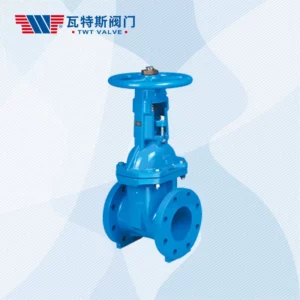Ductile iron gate valves are designed to control the flow of liquids and gases in a piping system. They work by opening and closing a gate that is located within the valve body.
Here’s how a ductile iron gate valve operates:
Valve Open: When the valve is open, the gate is lifted out of the way, allowing fluid to flow freely through the valve body. The gate is held in the open position by a stem attached to the gate, which runs through the top of the valve body.
Valve Close: To close the valve, the stem is rotated, which lowers the gate into the flow path and blocks the fluid flow. The gate forms a tight seal against the valve body, stopping the flow of fluid completely.
Stem Operation: The stem is typically operated by a hand wheel or other actuator attached to the top of the valve. The hand wheel rotates the stem, ductile iron gate valve supplier which in turn moves the gate up and down.
Valve Sealing: The gate valve’s tight shut-off is achieved by a tight seal between the gate and the valve body. This seal is maintained by a gasket or packing material that surrounds the stem, and prevents fluid from leaking past the gate.
Positive Shut-off: One of the key features of a ductile iron gate valve is its ability to provide positive shut-off, which means that the valve is capable of stopping the flow of fluid completely when it is closed. This is critical in applications where precise control of fluid flow is required.
It’s important to note that ductile iron gate valves are designed for use in specific applications and conditions, and it is crucial to choose the right type of valve for your system based on its operating pressure, temperature, and fluid compatibility. Regular maintenance and inspection are also critical to ensure the longevity and reliable performance of these valves.
